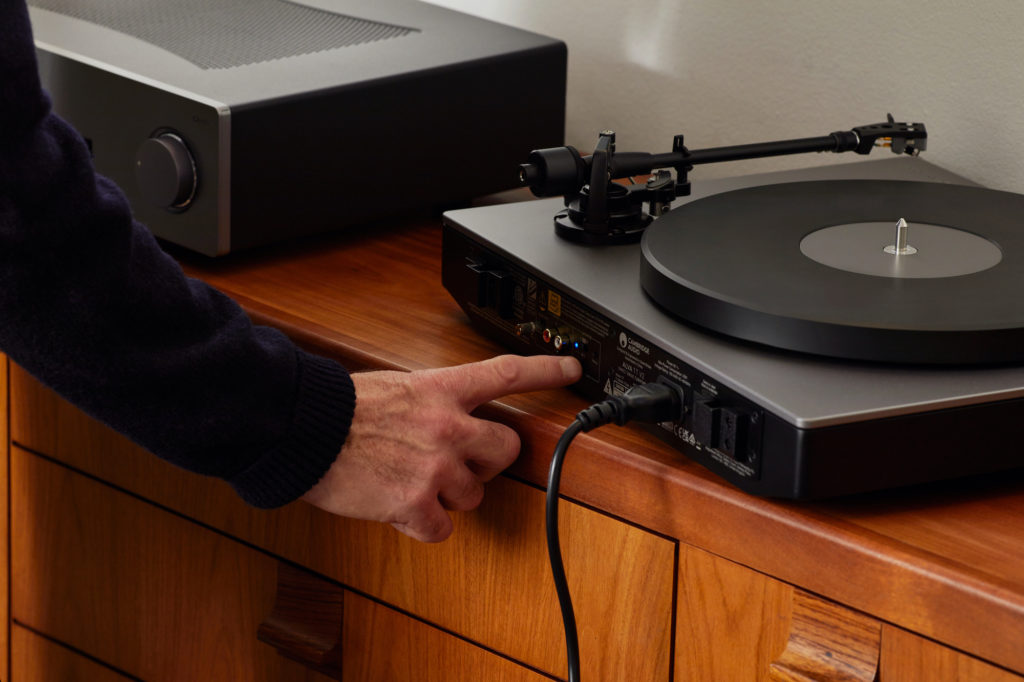
It was first founded in 1968 as an R&D shop by a group of young technology graduates.
More than five decades later, high-end audio equipment manufacturer Cambridge Audio has been through several waves of digital music disruption – from the iPod and mobile music, to wireless speakers and the resurrection of vinyl.
In a world of global giants, how is the company using marketing, advertising and publishing to turn audiences on to its “Great British Sound”? In this interview with The Map, Cambridge Audio marketing director Charlie Henderson, who took the role in March 2022, explains.
1. Leaning into listeners
What is the driving force behind your marketing strategy?
CH: “One of the most important questions we ask each other is ‘what is your music moment?’ What is the moment in a particular track that moves you, defines you, even changes you?
“Another thing that sets us apart is our huge focus on building a direct relationship with our customers, as well as nurturing our extensive and brilliant network of retail partners. We call them ‘listeners’, and we focus our energies around doing everything ‘For People Who Listen’.”
2. Campaigns for creatives
What is your biggest marketing or advertising challenge or initiative this year?
CH: “Our key focus this year is a radical shift towards enhancing our digital capabilities. To reach beyond our existing audience, we must be more visible to those in adjacent groups.
“We are creatives at heart, with music as our focus. We share the same passions as photographers, designers, architects, film makers, and so many more creative groups.
“To reflect this, we recently launched the first chapter in our ‘For People Who…’ campaign. It starts by working with a local photographer who is taking the leap into being fully freelance, and how music inspires her on set.
“Further chapters will focus on design, architecture and more, sharing the passions of those creative communities all around us. By working with fellow creatives and sharing their stories, we can reach these parallel audiences.”
3. Embrace failure fear
What are people getting wrong in the industry?
CH: “Reluctance to change, and fear of the unknown. It’s the single greatest threat to creativity and success. The shift towards digital has exacerbated this, especially in the premium audio sector.
“Some see digital marketing as undermining the core relationships with traditional retail built up over many decades, rather than seeing the incredible potential to introduce new audiences into a world that may not even be on their radar today.
“Coupled with a resistance to experiment, I see too many brands continuing to exploit the channels they know best, rather than trialling new ideas. It’s okay to fail when you’re experimenting with new ideas – but do it quickly, learn and try again.”
@cambridgeaudio We went to see Arcade Fire open up KOKO and it was wonderful #koko #arcadefire #cambridgeaudio #audio #camden
4. Targeted reach through digital
What is the role of mass media and premium publishing in your marketing mix?
CH: “Mass media campaigns are a tricky beast for premium audio. The balance between reach and memorable duration at a manageable cost has always been hard to achieve.
“I watch with genuine excitement as I see how new media channels are providing targeted reach and conversion capabilities for categories like ours. I am particularly fascinated at how TikTok has evolved so fast, and how my teenage children get almost all their information from it – from the predictable dance moves memes, but also now exclusively getting their new music choices from the platform, even serious news.”

5. Agencies must retain their energy
How can agencies evolve to meet brands’ changing needs?
CH: “For Cambridge Audio, agencies have played a pivotal role in recent years … This made sense historically, as the role of digital was embryonic in marketing activity. But, nowadays, with digital central to our marketing philosophy, we need to be much more capable of managing things in-house.
“Agencies remain critical … If we don’t evolve, a brand can lose a sense of energy – and agencies can bring exactly that. The greatest agencies I have ever worked with challenge everything and assume nothing. They bring a fresh perspective, forcing you to admit what works and what doesn’t work.
“I think of recent work by industry greats like Nils Leonard and Uncommon Creative: utterly inspiring creatives who can completely reimagine a brand, bringing it to life in truly original ways.
“Agencies need to keep themselves on their toes as well. Frustratingly I’ve seen all too often an agency start with huge energy and then over time slip into the same bad habits as some of their clients. The bottom line is to work with those who share your passion and a belief in your vision and purpose. And keep honest with each other.”

6. Fully-flexible future
How will your marketing team be different in three years’ time?
CH: “Digital will no longer be a specific team within marketing departments. It will simply be ‘marketing’.
“The boundaries between marketing and sales will continue to blur as customer journeys are tracked from initial contact through to conversion.
“Teams will be located anywhere. At Cambridge Audio, we are already fully flexible with regards to locations and home working for our teams. The importance of being a great place to work where people are engaged and inspired to do great things will become even more critical as job mobility increases.”